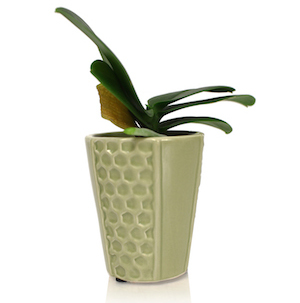Sponsored Links
Loading...
How Do I Care for a Resting Orchid?
 When an orchid is finished blooming, its blooms will wilt and fall off before it enters into a resting period. Resting is a normal part of the Phalaenopsis orchid lifecycle in which your plant is storing up energy to rebloom. Continue to care for your plant during this period, and you’ll likely be rewarded with vibrant, healthy blooms.
When an orchid is finished blooming, its blooms will wilt and fall off before it enters into a resting period. Resting is a normal part of the Phalaenopsis orchid lifecycle in which your plant is storing up energy to rebloom. Continue to care for your plant during this period, and you’ll likely be rewarded with vibrant, healthy blooms.
Here’s how to best care for your resting orchid:
Water Weekly
Just because your orchid does not have flowers does not mean you should stop watering it. Continue to water your orchid with three ice cubes (one ice cube for orchid minis) on the usual day each week. Sign up for our orchid watering reminders so you don’t forget your watering day!
Fertilize
Orchids differ from traditional houseplants in many ways, including how they get their nutrients. Unlike houseplants that feed from their soil, orchids receive their nutrients from their fertilizer and potting medium. These nutrients are especially important during the resting phase. For optimum health, fertilize your orchid every other week or once a month with a balanced fertilizer (20-20-20 or 10-10-10) mixed at half strength. Do not water your orchid on the weeks you fertilize.
Give it Plenty of Indirect Light
Just as when it’s in full bloom, your orchid needs lots of indirect light during dormancy. Give your plant the light it craves by tucking it behind a sheer curtain in a north or east-facing window to shield it from direct sunlight.
Move It to a Cooler Room
Orchids love warm temperatures between 75 and 85 degrees Fahrenheit during the day; however, they prefer cooler nighttime temperatures. Moving your orchid to a room with a temperature between 65 and 75 degrees for a couple of weeks during the resting period can help trigger reblooming.
Dress It Up
Blooms aren’t the only beautiful orchid feature that disappears during dormancy. The orchid stem may dry and turn brown, and orchid leaves take on a dull and faded appearance and may become limp and flat. The good news is you can dress your orchid during this time to help maintain its allure. Add a silk stem of Phalaenopsis orchid blooms (taking care not to disturb the roots of your orchid) or incorporate the orchid pot into a larger display of greenery from complementary plants such as mosses.
Resting is not the kiss of death for your plant. In fact, with proper care, you can make your plant’s next bloom the best one yet.
Sponsored Links
Loading...
loading...